Fuzzy disciplines: Artistic collaboration in South African fashion design
- by Chloë Reid
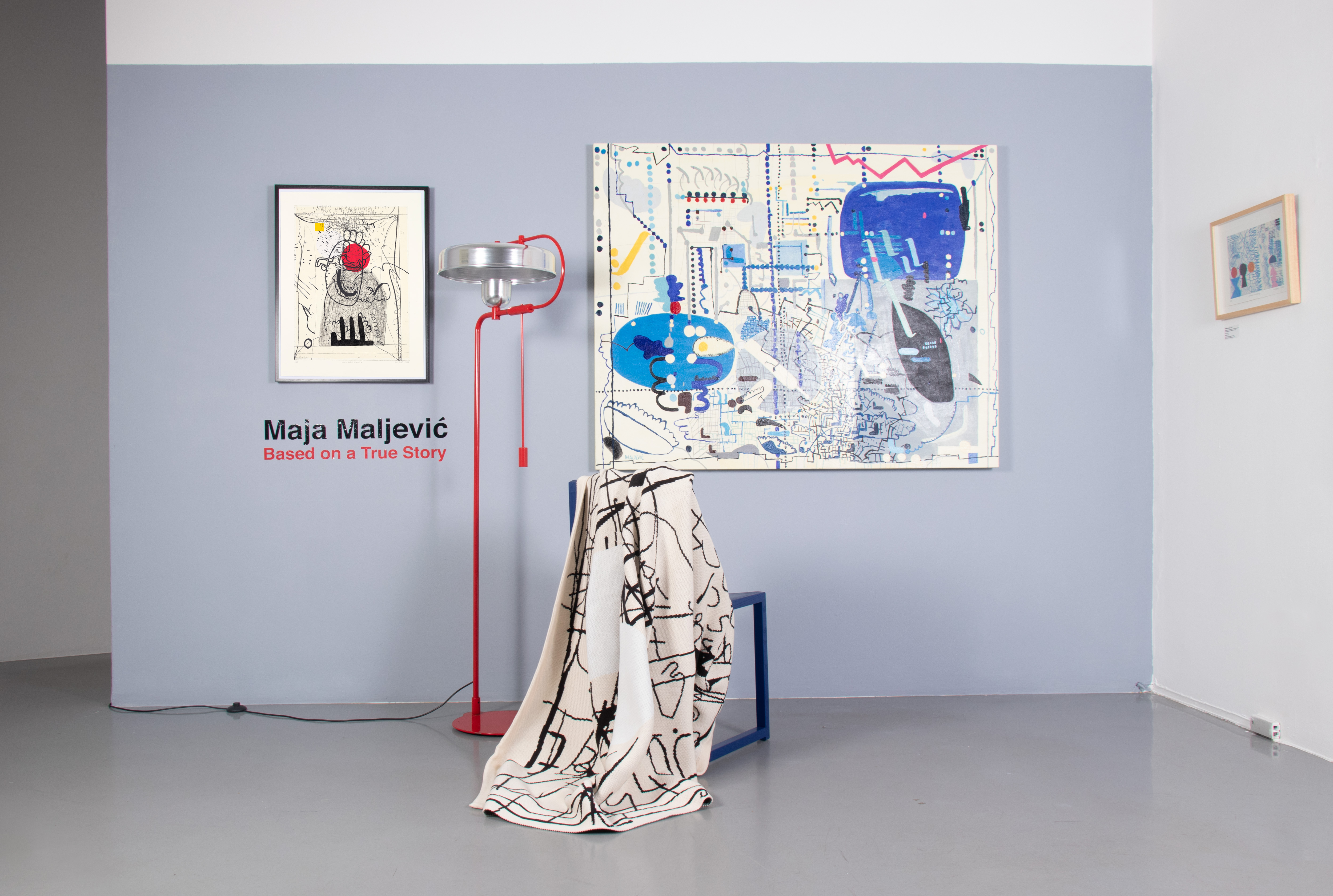 Sketch 22, Something Good Studio x Maja Maljević, px centred studio 10
Sketch 22, Something Good Studio x Maja Maljević, px centred studio 10
“I’ve had people approach me saying ‘I had no idea you made paintings as well as socks’”, says Olivié Keck, a Cape Town-based artist who has worked on a number of projects in which her artworks have been translated into what she calls “wearables” - socks by Feat., scarves by L’MAD and the Norval Foundation, and masks with Sho Madjozi. While collaborations between artists and fashion, furniture or homeware designers are not uncommon in South Africa, there remains some confusion and even skepticism around the extent to which the disciplines of contemporary art and design can and should overlap.
Zydia Botes of Something Good Studio, who collaborates with artists to produce blankets, throws and rugs, sums up misconceptions within the design industry saying,“You won’t believe how often I get the question: “So what do you use the blanket for?”
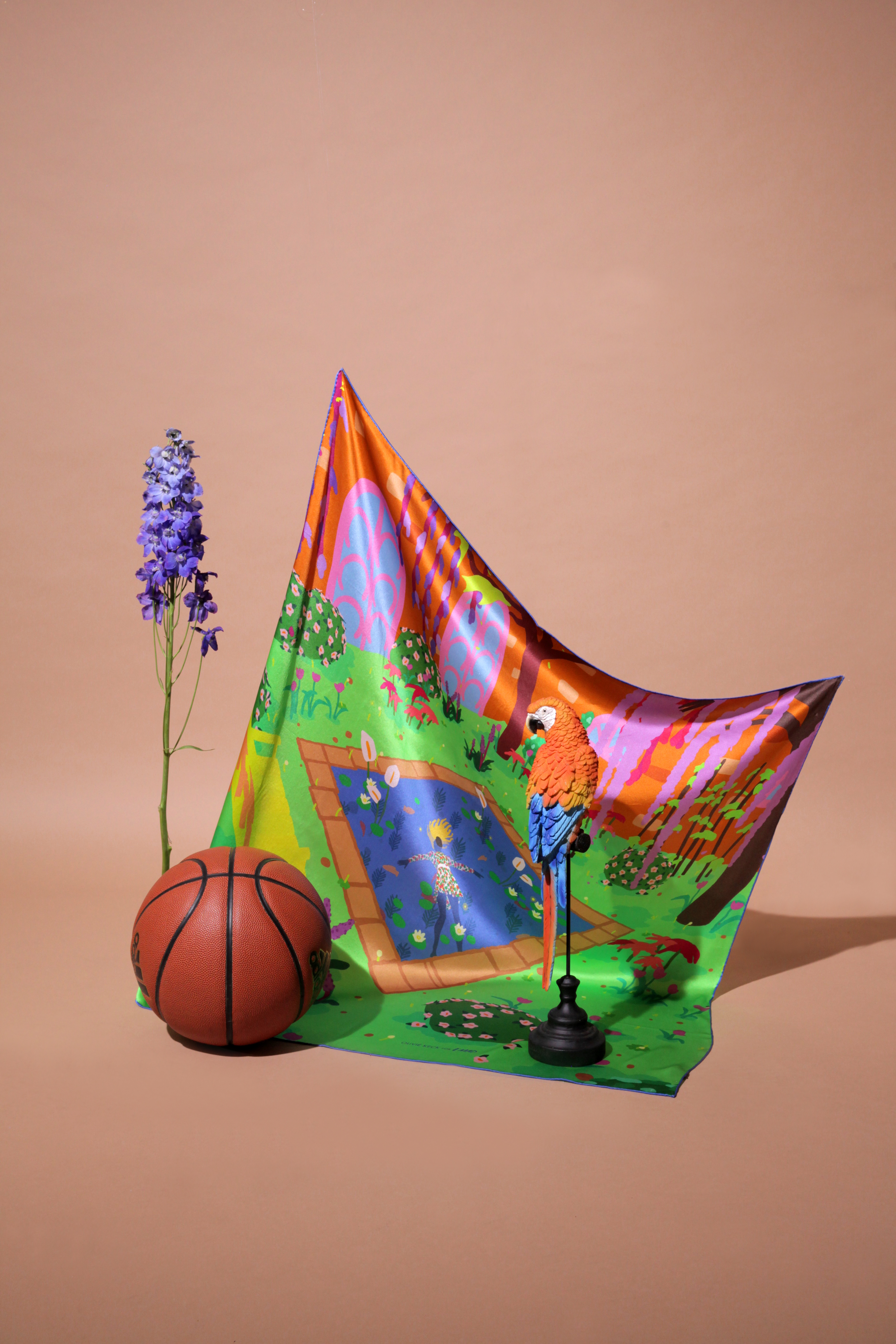
Olivié Keck, Ophelia Forever | Scarf, R 2,300.00 ex. VAT, BUY NOW
Within the South African art space, this ‘confusion’ occasionally reflects archaic divisions between functional and decorative design and the higher intellectual or conceptual status of ‘Fine Art’. “There’s a difference between collaborating with Nike and collaborating with, say, Whiskers,” suggests Olivié Keck, “but I think it’s actually an intellectual or academic argument rather than a real-world consequence. Maybe people will think that putting your work on a sock undermines the intellectual value of your ‘oeuvre’, but at the end of the day, a lot of your ability to grow is just getting your work into the world. People don’t buy a painting and then walk around with it.”
Artist Io Makandal considers that “the South African art space seems to want to hold onto these boundaries, but it’s so market driven, it doesn’t really make sense. I produce drawings very much in order to survive and to be able to support other kinds of work that I make, and that's just the kind of reality within which we work here. I appreciate collaborations with designers because they help towards more experimental projects in my art practice. Then again, I also sometimes feel self-conscious thinking, ‘how is everyone else reading this?’”
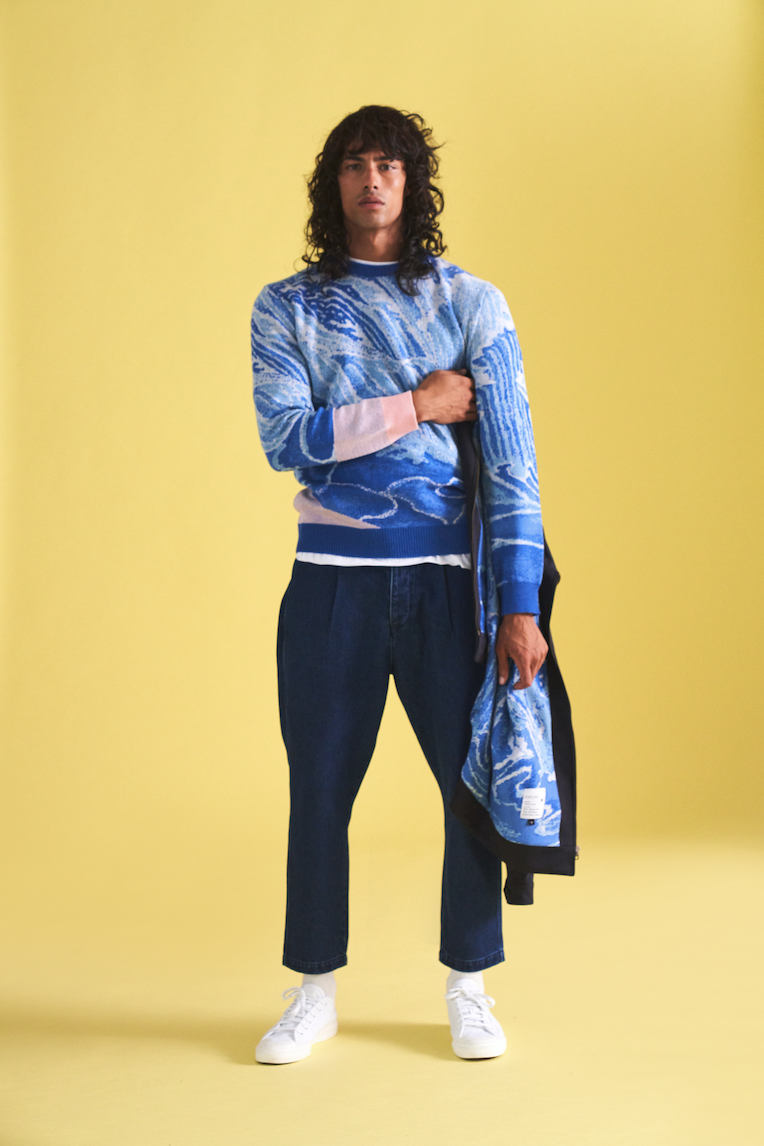
Shakil Solanki for FIELDS, Credits: Designer: Mikael Hanan, Stylist: Studio Degens, Photographer: Ian Engelbrecht, Model: Aaron Zeederberg
“Enough people have actually told me, I’d rather frame the scarf and hang it in my home as opposed to wearing it or putting it on my bag,” remarks artist Shakil Solanki, referring to silk scarves produced in collaboration with L’MAD, “that’s really left to the discretion of the buyer, but it’s another kind of charm that can come into play through this type of project.”
Ornamentation and adornment is an integral part of Solanki’s practice and likely accounts for the ease with which he has collaborated with designers including L’MAD, Sindiso Khumalo and most recently, the contemporary menswear brand, FIELDS. “There’s often a sense of fabric or pattern or textile that runs through my work, which makes the process of collaborating with brands like L’MAD, FIELDS and Sindiso Khumalo feel really special.”
Solanki first collaborated with Sindiso Khumalo when Khumalo was developing a collection for Milan fashion week as a winner of the international LVMH 2020 prize. Solanki referenced botanical drawings in developing images of cotton flowers, which Khumalo translated into patterns. According to Solanki, “the collection drew inspiration from Harriet Tubman and her legacy,” an extension of what Khumalo describes as an interest in “...representations of Black women and women of colour at the turn of the 20th century” with a focus on “portraiture of both African and African American women during this time.”
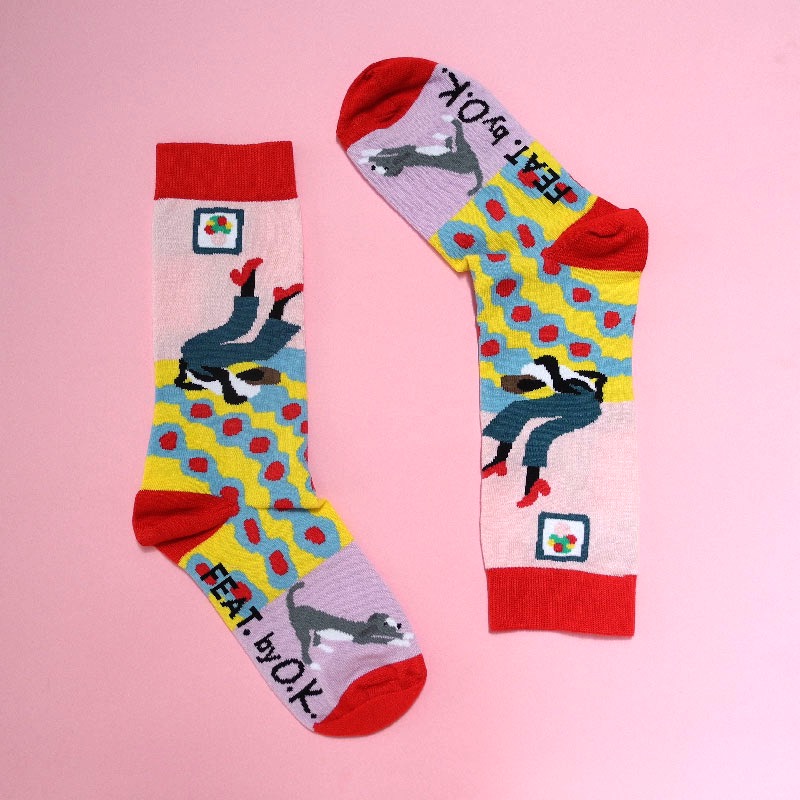 Roly Poly, Olivié Keck, Feat. Socks, Courtesy of the artist
Roly Poly, Olivié Keck, Feat. Socks, Courtesy of the artist
This was a very positive first experience for Solanki, who emphasised Khumalo’s attention to detail in her designs and transparent approach to the collaboration. “She was a pleasure to work with,” he says.
Transparency, fairness and mutual respect are qualities that set these projects apart. Of her experience working on a silk scarf with L’MAD, Io Makandal says, “It was all very transparent. They had a clear agreement where they pay you for your work and then you receive a percentage from each sale”.
Something Good Studio, Romaria and FIELDS take great care in sourcing their materials and manufacturing locally. All of the designers mentioned in this piece work closely with artisans and makers, prioritising natural and/or recycled materials and producing high-quality items at a small scale or with limited editions. Botes details her experience when she first approached local textile producers to work with Something Good Studio: “What can we do to make this the thickest, softest, best quality blanket, how many colours can we incorporate? The factories struggled to understand this mentality. They couldn’t believe we’d sell them.” Working at this scale and with these standards with regards to quality and sustainability brings with it high production costs, so these brands necessarily cater to a limited market that can afford to pay dearly.
For Botes, who has a background working on the supply side of big South African retail chains in fashion, where creativity is corseted by deadlines, seasons and competitive pricing, the slower, quieter movement of the art economy holds unique appeal. “The way that we run our business is more along the lines of the way things work with art. We build relationships with manufacturers, collaborators and clients and we don’t push for seasons or trends or deadlines. We develop things in a slow manner and introduce the work when it's ready.”
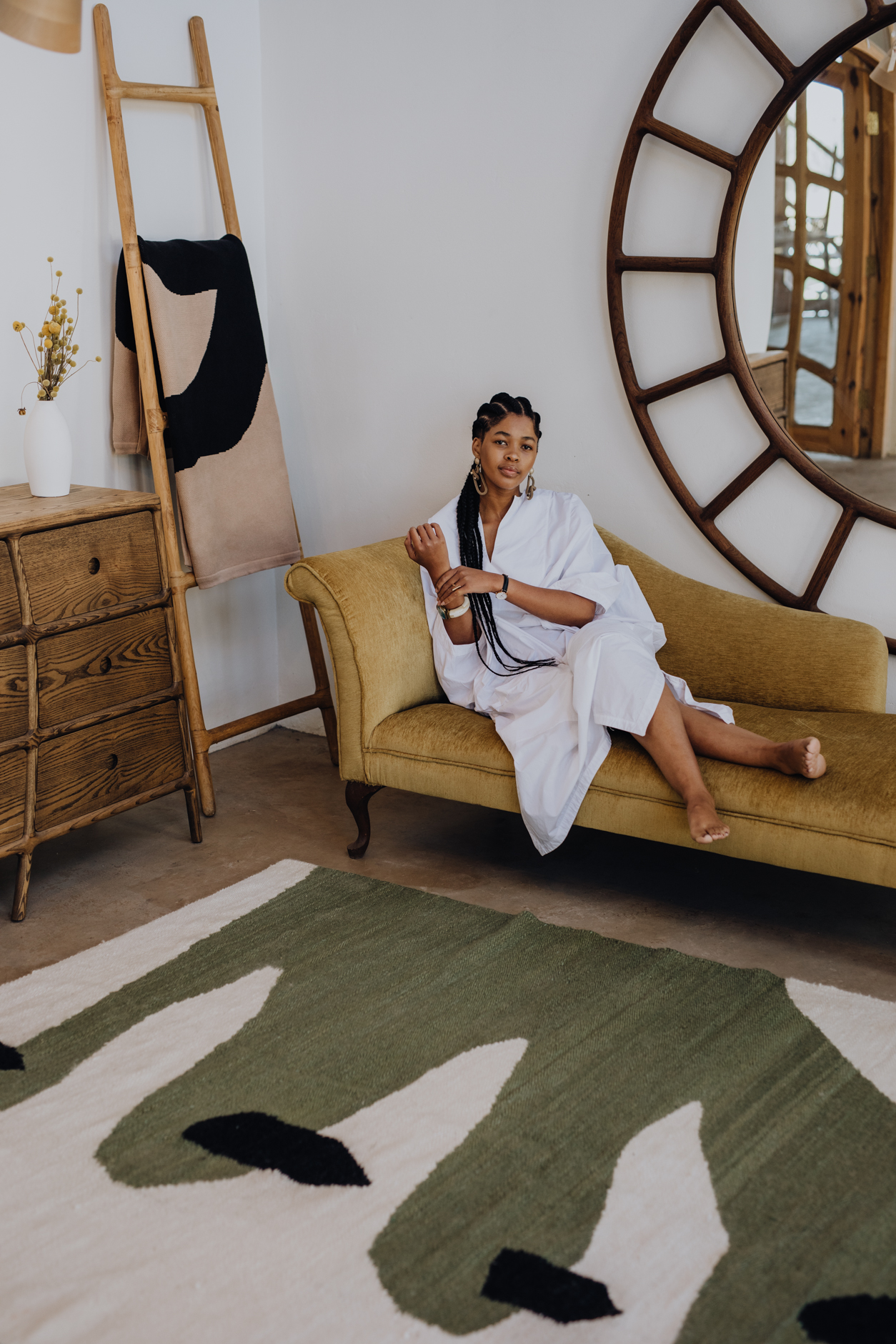
Something Good Studio x Lulama Wolf, Mohair Rug - 'Coalition', R 9,391.30 ex. VAT, CONTACT TO BUY
In some collaborations, the lines between artist, designer and artisan are blurry. Writing for Artthrob, Georgia Munnik referred to the collaboration between fashion designer Lukhanyo Mdingi and artist Jeanne Gaigher as ‘porous’. “Practising mutual permeability between the uneasy symbolic capital of a ‘fine art’ painting and the sartorial garment, Gaigher, Mdingi and the hand-crafters anticipate the body collectively,” clarifies Munnik. The collection reads neither as artwork or garment, with the role or function of clothing subsumed by the thinking, processes, materials and bodies behind it.
The Johannesburg-based fashion house, VIVIERS, similarly exemplifies a fuzzying of disciplines and has been known to dress artists, curators and other insiders for art fair and exhibition openings in a way that a recent onlooker referred to as “very Game of Thrones.” In an interview with Denzel Nyathi for Bubblegum Club, Creative Director Lezanne Viviers expresses how the brand understands the relationship between creative disciplines: “VIVIERS aims to embody the idea of a New Earth culture, where nothing exists in isolation. I am, because we are, and therefore, you are… the true spirit of UBUNTU.”
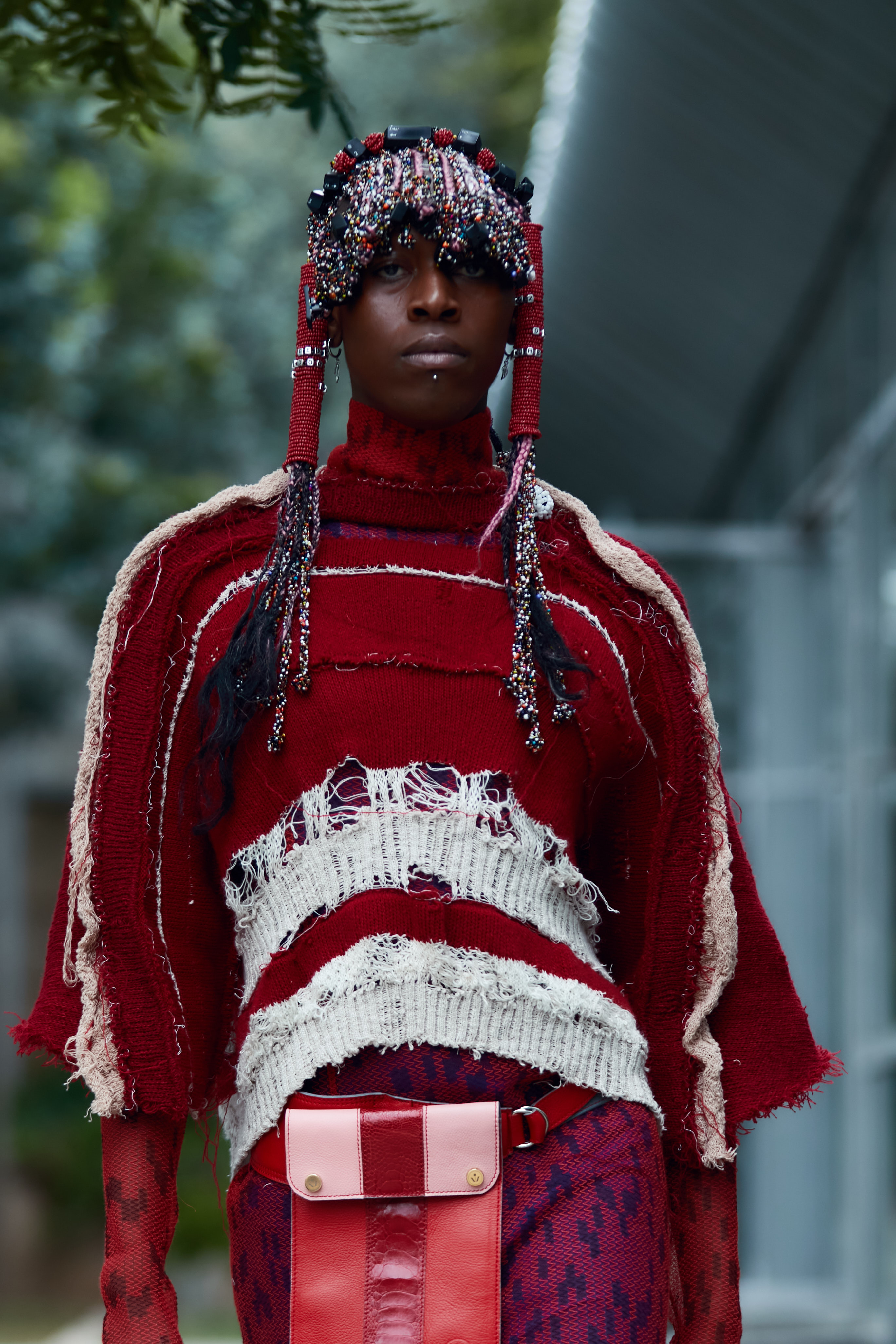
Viviers, MOTHERBOARD FW22, Circuit Board Slip Dress with upcycles artisanal circuit jersey and utility bag, photo credit: @Richartistry
“For me she is an artist,” says Lucy MacGarry, founder of L’MAD and co-founder of Latitudes. “Her openings are experiences, she doesn’t just do a fashion show, she brings people into her space and creates this very experimental, immersive experience. She’s collaborative, and if you close yourself off to that it’s a pity, it’s not easy to keep momentum and to be sustainable.”
Through all these projects, collaboration seems to be a key thread. After all, as Olivié Keck advises, “You never know where a sock might lead you."
Chloë Reid is an artist, writer and curator whose research interests include everyday sociology and the relationship between reading, writing and artistic practice.
Further Reading In Articles
African Artist Directory















